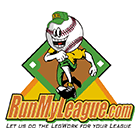- New members are always welcome - ENYTB continues to grow, having reached 225 teams in 2019
- New teams are allowed to roster up to four players one year older than their team age (pre-2019 teams are grandfathered at five such players); and,
- New teams are allowed a maximum of four players from active ENYTB teams, provided no more than three of those players are from the same team.
For more information re: ENYTB membership you may contact ENYTB Executive Director, Andy Frye at (518) 545-0747 or by email at andy@enytb.com.
